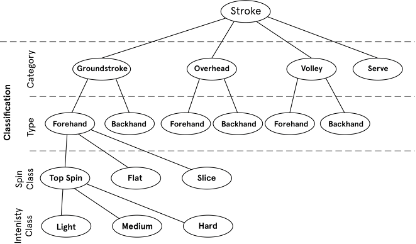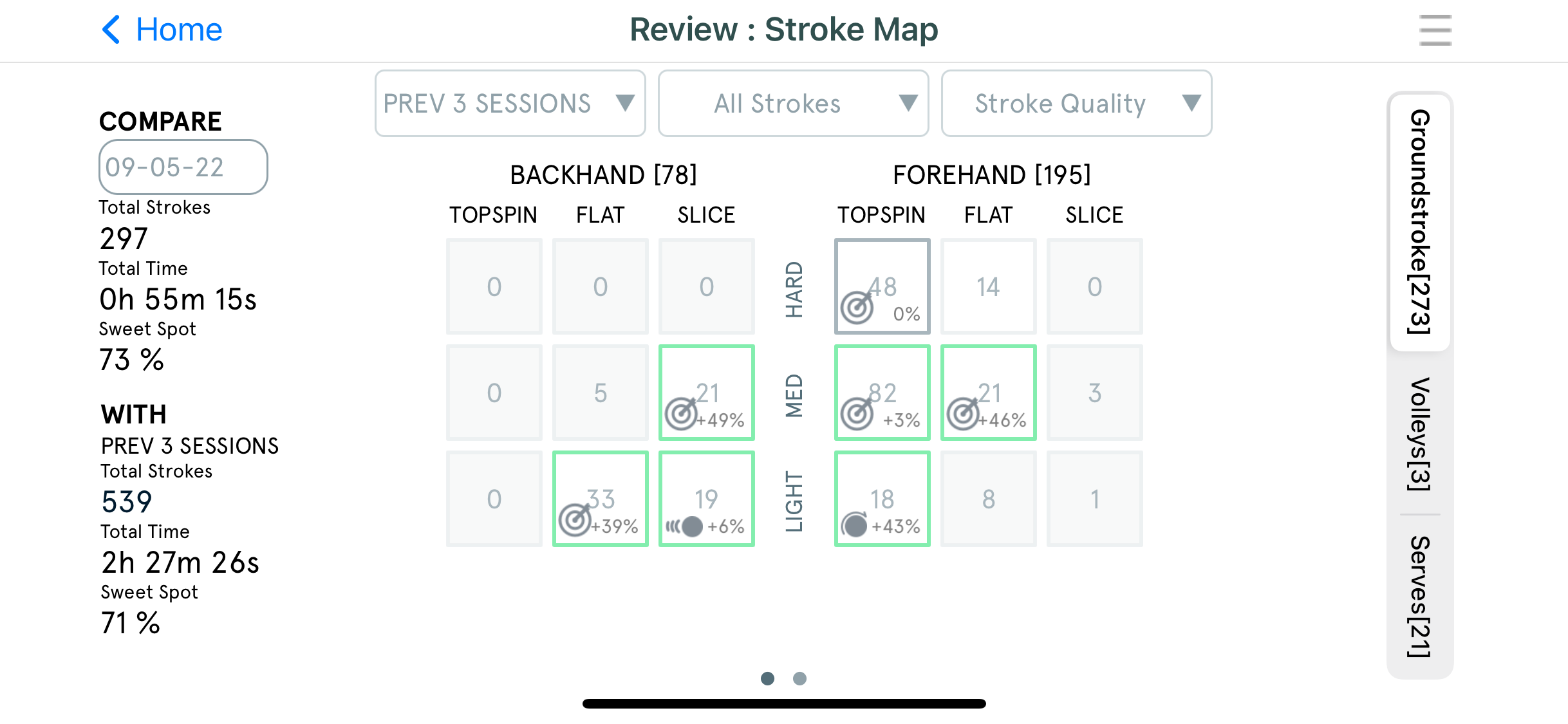The foundation of effective data-driven training is using the right movement models. CueMate models your movement performance using a hierarchical model, which can be summarized as follows.
Natural Tennis Movement Organization
First, tennis movements have a natural organization that emerges from the game structure and the different forms and levels of interactions between the player, the racket, and the ball. Therefore, when processing and modeling skills, it is critical to account for this organization

Hierarchical Model
CueMate processes the movement data using a hierarchical model, which means several levels of analysis. This is not just a design decision but reflects the natural movement organization just described and also how movement is organized in the brain!
| Stroke Repertoire – At the top level, the repertoire, which is your vocabulary and is organized in stroke categories. – Then each stroke type is as a class. – And finally different spin and intensity classes. |  |
| Stroke Classes – CueMate combines the strokes that are similar in technique and outcome. – This makes it possible to analyze them as a group and powerful mathematical tools. |  |
| Stroke Architecture/Phases – And then finally, for each class, the stroke architecture. – Complex movements like the stroke are created by stringing together several sub-movements or phases. |  |
Understand Your Strokes
The hierarchical movement model helps you understand your tennis skills.
Remember, the movement model reflects the movements your brain has acquired.
| Level | Benefits |
| Your repertoire of strokes. | – Identifies the different stroke types that form your stroke repertoire. – Every player has their own repertoire. |
| Each stroke types in your repertoire. | – Range of outcomes (spin, speed) – Strike quality (how well you setup to strike the ball) – Movement technique (e.g., backswing, back loop, forward swing, etc.) |
Skill Model
CueMate makes data actionable through its skill model. Every stroke contributes to knowledge about your skills and performance, which in turn supports training interventions.
Diagnose and Elevate Your Skills
CueMate’s skill model is comprehensive–covering the overall skill profile through the repertoire–and detailed through a model of the stroke technique of the individual stroke classes.
Insights from these models can then be turned into training interventions that will help take your skills to the next level.
The following highlights the benefits of the repertoire and stroke class models.
| Repertoire Level | Benefits |
| The Stroke Repertoire—or Stroke Map—organizes your strokes into distinct classes and enables understanding and navigating your stroke vocabulary. | – Understand your core stroke classes and how they contribute to your current skill level and game style. – Identify the major gaps in your repertoire to help improve your versatility and competitiveness. – See how you use your repertoire in games to make sure you play on your strengths. |
 | The review screen allows you to quickly see your strength and weaknesses across the stroke repertoire. |
